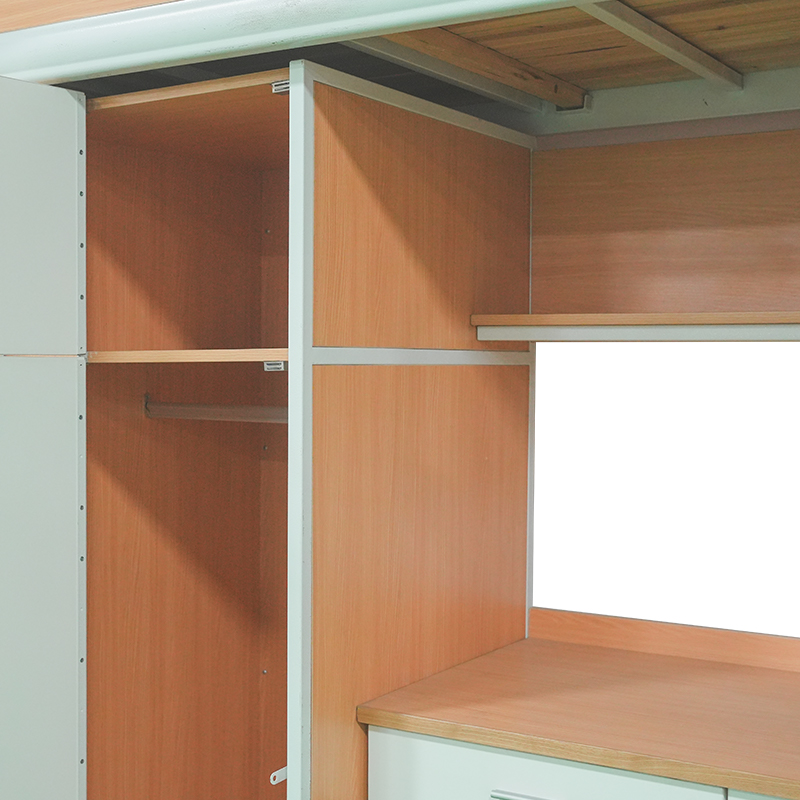For schools that improve boarding, the student dormitory bed is also an important piece of school furniture in the school. Its use can directly affect the overall condition of the students. Therefore, when choosing a student dormitory bed, you need to consider many aspects. It is not enough to just configure a high-quality student dormitory bed. It is also important to maintain it during use. So what aspects should be taken into consideration to maintain the student dormitory bed?

1. Since students are more naughty, it is easy to damage the structure of the student dormitory bed when using it. For example, jumping on the bed will cause the overall structure to become loose. In this way, long-term use will not only shorten the service life of the student dormitory bed but also easily cause some safety hazards to students. Therefore, to avoid this phenomenon, it is necessary to warn students to use it correctly and to regularly maintain the student dormitory bed to ensure that its structure will not be loose and parts will not fall off.
2. To maintain the neatness and beauty of the student dormitory bed, it is necessary to clean and maintain it to avoid the accumulation of dust and stains and some unnecessary impact on the student dormitory bed. When cleaning and maintaining the student dormitory bed, we need to pay attention to the method. You can use a soft cloth to wipe it. Although it is waterproof during production, it is also necessary to avoid contact with water during use to prevent moisture from penetrating the material and causing some unnecessary harm to the overall structure of the student dormitory bed.
3. Because the environment will have a certain impact on the student dormitory bed, it is also very important for us to maintain the student dormitory bed. It is not suitable to place the student dormitory bed in a humid or overly dry environment, and it is also not suitable to place the student dormitory bed in a place like an air conditioning vent to prevent the service life of the student dormitory bed from being affected. During use, it is also necessary to pay attention not to move the student dormitory bed at will to avoid damage to its structure, and not to contact hard substances to avoid irreversible damage to its surface.
Heavy Duty Student Dormitory Bunk Beds are essential pieces of furniture designed to meet the rigorous demands of educational institutions and dormitories. These bunk beds are specifically engineered to provide durability, comfort, and functionality, as they must withstand constant use in a high-traffic environment. The production process of these bunk beds involves multiple stages, each ensuring that the final product is of high quality and suitable for student living.
1. Design and Planning
The production of a Heavy Duty Student Dormitory Bunk Bed begins with the design phase. This is where the overall layout, size, material selection, and structural integrity of the bed are planned. The design team works closely with engineers to ensure that the bunk bed can support the weight requirements typical in a student dormitory. The Heavy Duty Student Dormitory Bunk Bed must be able to support two adults sleeping on it while maintaining stability and safety.
The design phase includes determining the height of the bunk bed, the space between the top and bottom beds, and any additional features like built-in storage, ladders, or guardrails. The aesthetic of the bunk bed is also considered, as it must fit into various dormitory styles and spaces. The Heavy Duty Student Dormitory Bunk Bed design is often minimalist to save space and maximize functionality, but it is also robust enough to handle the wear and tear of dormitory life.
2. Material Selection
Once the design is finalized, the next step in the production process of the Heavy Duty Student Dormitory Bunk Bed is the selection of materials. Heavy-duty bunk beds must be made from materials that can withstand continuous use. The common materials used for these beds are steel and high-quality wood, although some models may use composite materials.
Steel is typically the material of choice for the frame due to its strength and long-lasting durability. The steel used for a Heavy Duty Student Dormitory Bunk Bed is often powder-coated to prevent rust and corrosion, particularly since the beds are often placed in environments with high humidity, like dorm rooms or student accommodations. The wood, when used, is selected for its sturdiness and aesthetic appeal, with hardwoods such as oak or maple being common choices.
The quality of the materials used directly impacts the longevity and safety of the Heavy Duty Student Dormitory Bunk Bed, which is why careful material selection is crucial to the overall production process.


 English
English русский
русский Español
Español عربى
عربى
